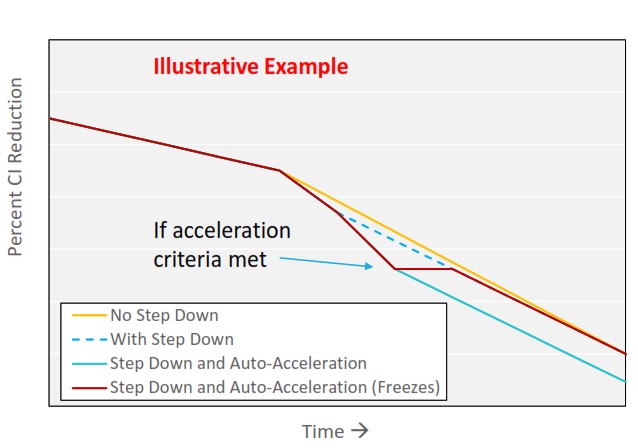The California Air Resources Board (CARB) held a workshop on August 16 to present updates to a model that assesses the feasibility and economic impact of proposed changes to the Low Carbon Fuel Standard (LCFS). Although the workshop did not specifically address policy changes, the inputs of this model are suggestive of what CARB may put forward in formal rule changes coming later this fall.
Why is CARB making changes to the LCFS?
The last time significant changes to the LCFS were made was in 2018. Since then, the agency has workshopped several policy and procedural changes and received significant stakeholder and community feedback. During workshops held last summer, CARB presented a plan to align LCFS with several key climate policies, most notably the 2022 Scoping Plan, which was formally adopted in December 2022.
Key Program Changes
The model inputs included many of the policy changes that have been discussed at public workshops over the past 18 months and may hint at what the agency will propose later this year. Some of these changes are highlighted below:
Accelerating Carbon Intensity Targets
Carbon intensity, a measure of lifecycle emissions of a fuel, is used as a benchmark to compare gasoline, diesel, and other low carbon fuels such as biofuels and electricity. The benchmark decreases each year to meet the current target of 20% reduction from 2010 levels by 2020. As the benchmark decreases, conventional gasoline and diesel generate more deficits (i.e. greater demand for credits) which produces the long-term incentive for lower carbon fuels.

CARB has proposed advancing the 2030 target to between 25% and 35% reduction, while adding a 2045 target of 90% reduction. The 2030 acceleration is significant because it would increase the demand for credits in the near term, depending in part on how the targets “step down” from their current levels in order to meet the new 2030 target. Proponents of steeper 2030 targets argue this will provide needed price support for the LCFS credit market which has significantly declined in recent years due largely to an oversupply in credits. Others caution that overly stringent targets would increase fuel prices and could undermine political support for the program.
In the latest iteration of the model, CARB included a 30% reduction target for 2030 with a significant step down between 2024 and 2025. While not an official proposal from CARB, it might indicate what the agency is ready to move forward with in the fall.
CI Adjustment Mechanisms

Phasing Out eForklifts
In previous workshops, CARB has proposed reducing and eventually phasing out credit generation from eForklifts. Staff discussed reducing the credit generation potential of lighter classes of forklifts and requiring electricity consumption to be metered. Forklifts are unique in that CARB allows for electricity consumption to be estimated. However, both the Oregon Clean Fuels Program and the Washington Clean Fuel Standard have recently required metering for electric forklifts in their programs. CARB’s latest model included a significant reduction in credits from forklifts, suggesting these changes are still on the table.
Verification Requirements for Electricity Credits
In a previous workshop, CARB proposed requiring all participants generating credits from electric vehicles to go through an annual verification process. Electricity is the only major credit source where fuel consumption reporting is not required to be independently verified. Other programs, such as the Canadian Clean Fuel Regulations require verification for all fuel types.
Expanding Infrastructure Crediting to Medium/Heavy-Duty Vehicle Charging
Under the LCFS, some public fast-charging stations are eligible to generate credits based on the total capacity of the site, not solely on electricity consumption. CARB has proposed expanding these provisions to stations that provide charging to multiple medium and heavy-duty fleets. CARB’s latest model included credit generation from this pathway, suggesting that the agency is still considering this change.
What’s Next for LCFS?
During the workshop, staff shared an updated timeline which confirmed that formal changes to LCFS will not be considered for adoption until early 2024. However, the agency expects to move forward with the formal rulemaking process later this fall, and implement the changes “sometime in 2024.”
TweetTags: CA LCFS, clean fuels, lcfs
